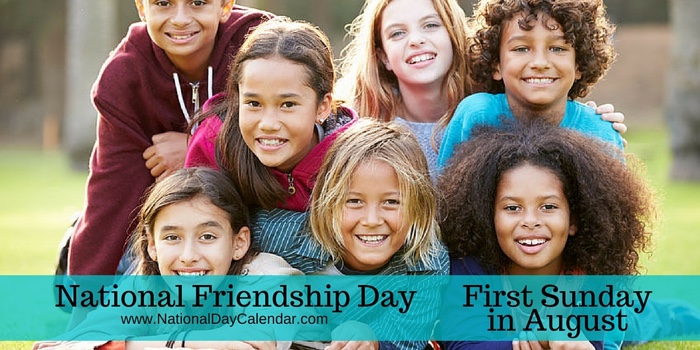In Our Polarized Times, We Can All Use a Friend
Friendship in the universe of social media is generally based on similarity. Finding friends through kinship of interests or personal likenesses can put us at ease. It’s comfortable to pal with people who share your foodie tastes or enthusiasm for Star Trek.
The magnetic pull of similarity is also at work in our political clustering. Americans are sorting by values and ideology not only in jobs and churches, but also in how they find friends and even in those they choose to marry.
The Pew Center reports that while only 8% of Americans maintain that “interracial marriage is a bad thing,” twice that percentage of political party members (15% of Democrats and 17% of Republicans) “would be unhappy welcoming someone from the other party into their family.”
 Is finding a similar person the only way to get close to a fellow human being. Seems a truism: birds of a feather flock together. The “Truly Me” dolls from American Girl are even designed to be personal replicas, so “girls [can] show exactly who they are—inside and out.”
Is finding a similar person the only way to get close to a fellow human being. Seems a truism: birds of a feather flock together. The “Truly Me” dolls from American Girl are even designed to be personal replicas, so “girls [can] show exactly who they are—inside and out.”
And Americans are flocking together, from inside the Beltway to Main Street USA, with ever-sharper polarizations around cultural and party differences. An increasing number of citizens are choosing where to live based on the predominant ideologies in neighborhoods. And after President Donald Trump’s meeting in Helsinki, Finland, with Russian Federation President Vladimir Putin, the American Polarizer-In-Chief commanded strong approval ratings of 64% among Republicans, despite all the criticisms from within his own party, according to an NBC/WSJ poll, while a whopping 80% of Democrats strongly disapproved of Trump’s performance.
Our tastes for similarity in friendship is percolating through the body politic. This trend produces comfort in the immediate circles, solidarity with the fellow minded across the land, and lots of anger directed toward everyone else outside of those circles.
There’s a place for the friendship of similarity, but it’s not the only source of comradeship, or even the strongest way to bond. The psychologist and philosopher William James (1842-1910) offers suggestions toward finding kinship through difference.
Early in his life, James declared, people “differ, thank heaven”! His attitude of gratitude came from realizing that similarity reinforced the ideas and assumptions he already had, but difference brought enrichment. He liked to say, quoting a carpenter friend, “There is very little difference between [people]; but what little there is, is very important.”
When James launched his academic career in the 1870s, he put together his very own Facebook—literally a scrapbook of portraits depicting scholars he was reading. By his late twenties, he had already developed “quite a decent nucleus” of his “Anthropological Collection.” He hunted out distinctive human traits in friends and colleagues, and he would needle his friends when traveling for “any further contributions” to the collection.
Shortly after starting to read the work of contemporary English philosopher Shadworth Hodgson, he wrote to him saying, “I think I shall understand your books better for having this vision of your face.” And despite his reservations about German scientist Carl Ludwig, who proposed reductionist chemical and physical explanations for human psychology contrasting with James’s own humanistic approaches, he said, “I have enjoyed Ludwig’s face very much; he must be a good fellow.”
And yet, despite all the riches of diversity, differences can breed hostility. The siren song of anger directed at those other guys who just don’t get it leads right back to polarization.
Friendship can be tricky. How to find enough similarity to gain a point of connection, but not so much that it stifles growth. Call it the Goldilocks Problem For Finding Friends: how to get it just right. When it works, friends find a sweet spot in relationships with variations on a theme—similar general goals, but different and even complementary ways of achieving them.
The Disney brothers were very different. Walt was creative and outgoing; Roy was quiet and businesslike. They tapped their differences in building the Disney Brother’s Studio. Years later, the avuncular Walt Disney liked to say of their entertainment empire, “it was all started by a mouse.” But five years before the 1928 debut of Mickey Mouse (after some trial runs as the less-cute Mortimer Mouse, who would become the unfriendly rival to Mickey in later cartoons), the animation studio itself started with the complementary skills of Walt and Roy. And those became bywords in the company: the artsy ones were “Walts”; the accountants were the “Roys.”
Counselors have a saying about good marriages and good friendships: you don’t have to see eye to eye, but it’s crucial to be looking in the same direction. So the key is to have enough similarity to generate a common enterprise, but not so much sameness that you stifle growth—or each other. Difference adds the juice of challenge and creativity.
James called this balance genius. He praised a friend of his, the popular philosopher Thomas Davidson, as a genius, for his ability to be a “friend of very different people.”
A close relationship does not mean agreement on everything; and frustrations over differences can be real storm warnings. However, the richest of friendships will grow among those willing to step up to the challenge of learning from differences. There’s the personal genius: remaining steadfast to yourself while finding the opportunities in the obstacles generated by human diversity.
